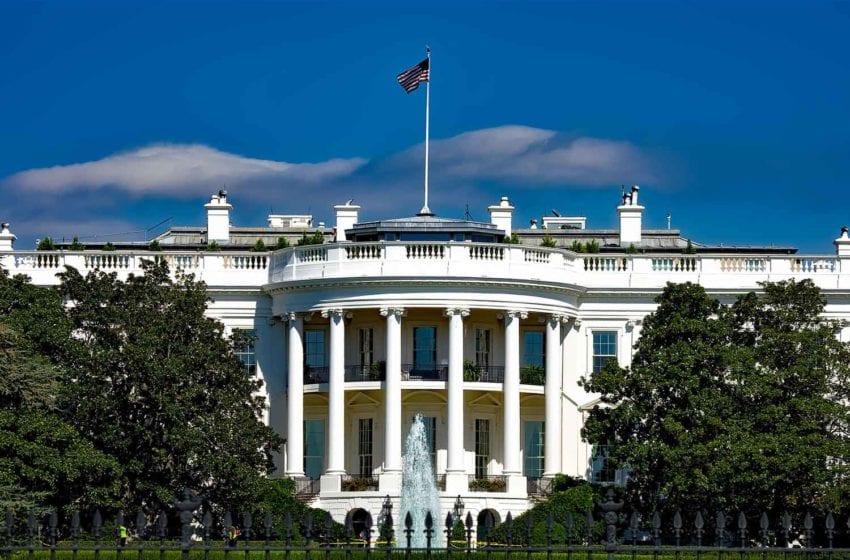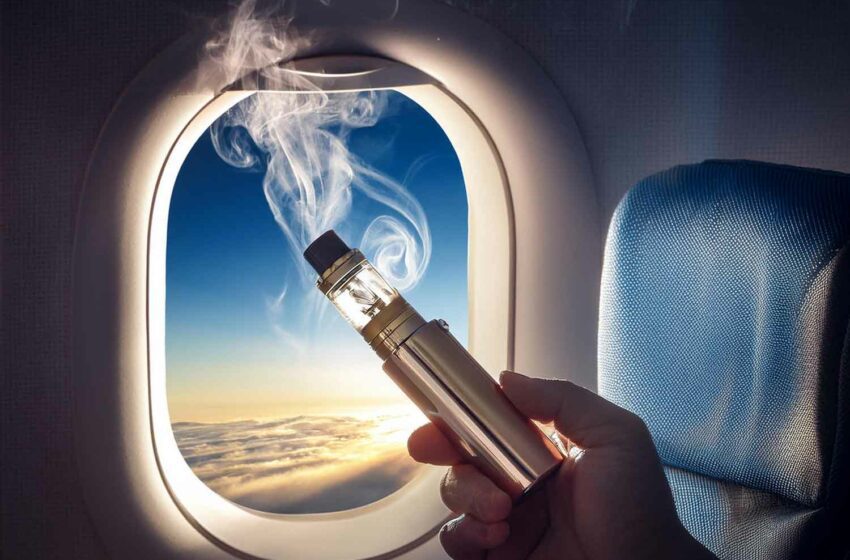U.S. cigarette makers’ 2016 prospects are remarkably bright.
By Timothy S. Donahue

It could be called a mini renaissance of sorts. After years of seeing quarterly declines averaging 3–5 percent, U.S. cigarette volume sales increased for the first time in more than a decade during 2015. This is a vastly different scenario from as recently as 2009—the worst year of the global recession—when quarterly U.S. cigarette sales were declining by 12.6 percent year over year. It was the first year since 2002 that sales volumes saw a surge.
During 2015, more than 264 billion cigarettes were sold in the United States—slightly more than in 2014, according to statistics from The Maxwell Report. Four companies—Philip Morris USA (PM USA), Reynolds American Inc. (RAI), ITG Brands and Liggett—accounted for about 91 percent of U.S. cigarette sales. Imports, primarily from Canada and South Korea, accounted for approximately 8.2 percent of U.S. cigarette inventories in 2014 and 8.5 percent in 2015.
Wells Fargo Securities senior analyst Bonnie Herzog said all channel cigarette dollar sales increased 2.2 percent for the 12-week period ending March 26, 2016, and 2.6 percent over the past 52 weeks. Prices during this time rose 3.6 percent, while cigarette sales volumes fell by only 1.8 percent. “Thus, we expect strong manufacturer pricing and profit growth to continue this year,” said Herzog.
Analysts with Stifel Nicolaus have even called the past 18 months the industry’s new “Golden Age.” Lower gas prices along with job and wage growth means smokers have more money to spend on cigarettes and for trading up to premium brands. Stifel analysts noted that somewhat higher than usual price increases last year helped boost tobacco company profits as well.
The latest forecasts by Moody’s Investors Service also make positive predictions for the U.S. tobacco industry in 2016, calling for a 4–5 percent rise in operating profits for the year. But the ratings agency also expects sales volumes to continue to decline, forecasting a 4 percent drop. “Moreover, the expected fall in sales volume could accelerate in the U.S. if e-cigarette sales see stronger than expected growth,” Moody’s senior analyst Nancy Meadows said.
The Big Three
In November, the three major U.S. tobacco manufacturers—Altria, RAI and ITG Brands—raised the list price on traditional cigarettes by $0.07 a pack for the third consecutive round. The list price is what wholesalers pay manufacturers. The increases typically are passed on to customers.
Altria, parent to PM USA, the largest tobacco company in the U.S., with a 51 percent market share, announced strong operating and financial results in 2015 and the first quarter of 2016. “Altria’s 2015 total shareholder return of 23.1 percent far outpaced both the S&P 500 and S&P Food, Beverage and Tobacco Index, marking the third consecutive year that total shareholder return has exceeded 20 percent,” stated Martin Barrington, chairman of the board, CEO and president for Altria. PM USA had a total cigarette shipment volume in the U.S. of approximately 126 billion units in 2015, an increase of 0.5 percent from 2014.
Altria also completed a $1 billion share repurchase program and announced a new $1 billion share repurchase program that it expects to complete by the end of 2016. In 2015, the company’s core tobacco businesses (PM USA, U.S. Smokeless Tobacco, John Middleton, Ste. Michelle Wine Estates and Nu Mark) grew their operating companies income (OCI) and strengthened their market leadership positions.
In the smokable products segment, PM USA and Middleton had an outstanding year, growing adjusted OCI nearly 11 percent. PM USA’s flagship brand, Marlboro, led the way. With more than 60 years of retail share growth, Marlboro continues to enhance its offerings.
Barrington noted that it’s too early to talk about the results of PM USA’s recent national expansion of Marlboro Midnight Menthol, which took place in November. However, he did say the company “expects Marlboro Midnight Menthol to build on the very positive momentum we’ve seen from the Marlboro Black family, which now has grown 20 consecutive quarters.” Marlboro’s retail share increased in 2015 by 0.2 share points to 44 percent, a record high.
RAI, the nation’s second-largest manufacturer at 33.8 percent, stated that its operating companies’ (R.J. Reynolds Tobacco, R.J. Reynolds [RJR] Vapor, Santa Fe Natural, American Snuff and Niconovum) domestic cigarette volumes increased 33.6 percent in the fourth quarter of 2015, driven by the addition of the Newport brand.
Reynolds became a stronger No. 2 when it acquired former No. 3 Lorillard last year. Its overall market share in the U.S. rose to 34 percent from 26 percent. The pearl of the acquisition, the Newport brand, has been a windfall for Reynolds. Newport has been realizing broad-based share gains across both menthol and nonmenthol styles, which analysts say should drive its long-term growth potential. In the fourth quarter of 2015, Reynolds’ domestic cigarette volumes jumped 33.6 percent over the prior year, driven by the addition of Newport. Industry cigarette volume fell 0.5 percent during the quarter and 0.1 percent for the full year, Reynolds said, much lower than the usual declines seen in recent years.
The total domestic retail cigarette market share in RAI’s operating companies’ drive brands (Newport, Camel, Pall Mall and Natural American Spirit) increased 0.6 percentage points to 31.3 percent in the fourth quarter and 0.5 percentage points to 31.3 percent for the full year. Natural American Spirit’s Santa Fe brand, the nation’s fastest-growing cigarette trademark, delivered an excellent 2015 performance with reported fourth-quarter operating income increasing 24.4 percent to $112 million. Santa Fe’s adjusted operating income increased 22.9 percent from the prior-year quarter to $111 million, benefiting from higher pricing and strong volume growth from the nation’s No. 1 super-premium brand, Sante Fe’s American Spirit.
When adjusted for wholesale inventory changes, industry shipments were down about 0.2 percent for the quarter and were down about 0.6 percent for the full year. “Reynolds American’s strong fourth-quarter results wrapped up a transformational year for our company,” said Susan M. Cameron, president and CEO of RAI. “Each of our operating companies delivered excellent results both in the quarter and for the full year. The integration of Newport is going extremely well, and I believe we’ve entered 2016 with significant momentum.”
Herzog noted that Newport is “poised for greater than expected share gains and faster growth,” which should strengthen the company’s long-term profitability. Besides Newport, the Lorillard acquisition handed RAI the brands Kent, True and Old Gold. As part of the deal, Reynolds sold Winston, Kool, Salem and Maverick to ITG Brands, the American arm of U.K.-based Imperial Brands.
ITG is now No. 3 in the U.S., with a market share of around 10 percent, up from approximately 3 percent before the RAI/Lorillard deal. Last November, ITG was able to begin selling in a new retail program following the end of an agreed standstill period with RAI. More than 150,000 retailers have signed up for the program, which is supporting new promotional arrangements for its priority brands Winston and Kool and improved in-stor evisibility.
“We’re delighted by the performance of ITG Brands,” Imperial Brands CEO Alison Cooper told investors during a conference call. “The sell-in of the new retail program has been a huge success. … Winston and Kool market shares appear to be responding well, both growing in the last quarter.
“We’ve got more in the pipeline as well, as we look at refreshing the brand equity and doing more in terms of the consumer offering, but at the moment it’s still very much focused on wholesale, primarily on the retail program that we’re executing against.”
Looking ahead
Taxation and regulation remain as constant hurdles to tobacco’s future. The U.S. Food and Drug Administration (FDA) has stated that it continues to believe there is a huge opportunity to develop a “comprehensive nicotine regulatory policy,” taking into account the continuum of risk as it relates to nicotine-delivery products—with combustible cigarettes on one end of the spectrum and nicotine-replacement therapy on the other end.
Whether the FDA moves forward with its plans to regulate menthol in cigarettes is still unknown. The FDA Center for Tobacco Products’ director, Mitch Zeller, has said that any potential regulation as it relates to menthol needs to be based on the science and within the parameters of the Tobacco Control Act.
Further, Zeller has said that the FDA cannot rely on the Tobacco Products Scientific Advisory Committee’s menthol report but noted that it is continuing to explore what the regulation options might be regarding menthol, if anything. Herzog said her thesis regarding potential menthol regulation remains intact. “I adamantly believe an outright ban on menthol is highly unlikely and realistically don’t expect any regulation of menthol for a very long time, if ever,” she said.
The greater challenge to the U.S. cigarette industry moving forward is more likely the rapid growth of vapor products. Currently, 10 percent of U.S. adults vape, according to an online Reuters/Ipsos poll of 5,679 Americans. It’s nearly four times higher than the U.S. Centers for Disease Control and Prevention’s (CDC) estimate of 2.6 percent in 2013.
The study also found that 15 percent of poll participants under the age of 40 are now vapers. In 2013, 18.8 percent of those 18 to 24 years old and 20.1 percent of those 25 to 44 years old smoked cigarettes, according to CDC data.
The vapor industry is expected to further change the tobacco landscape. All three major U.S. cigarette manufacturers sell vapor products. Altria, under its Nu Mark subsidiary, began shipping its next-generation e-vapor product, MarkTen XL, into lead markets in April 2015. MarkTen XL is a larger-format product that delivers twice the liquid and battery life as previous MarkTen products.
Declines in e-cigarette sales continued through the beginning of 2016, down 7.6 percent over the previous 12 weeks ending May 26. The Nielsen data tracks the mass channel and convenience store marketplace. After debuting nationally in June 2014, Vuse quickly became the top selling e-cigarette. It had a 38.9 percent market share, up from 38.7 percent in February. ITG’s Blu was second at 20.4 percent, followed by Logic at 14.2 percent, MarkTen at 8.8 percent and NJoy at 4.3 percent.
The vapor market recorded at least $3.3 billion in sales in 2015: $1.9 billion in vapors, tanks, mods and personal vaporizers, and $1.4 billion from cigalikes. All the major tobacco companies see a future in vapor, and more acquisitions and product releases are going to happen in 2016, according to industry sources.
In December 2013, Altria entered into a series of agreements with Philip Morris International (PMI) providing exclusive license to PMI to sell Altria’s subsidiaries’ vapor products outside the U.S. PMI’s subsidiaries, in turn, provided an exclusive license to Altria to sell two of PMI’s heated-tobacco product technologies in the U.S. In July 2015, Altria announced the expansion of its strategic framework with PMI to include a joint research, development and technology-sharing agreement. Under this agreement, Altria and PMI will collaborate to develop e-vapor products for commercialization in the U.S. by Altria and in markets outside the U.S. by PMI.
Another possible highlight in 2016 is the announcement of a series of product innovations from RJR Vapor; a vapor collaboration is underway with stakeholder British American Tobacco (BAT) to help grow the market. “Vuse remains the vapor category leader, and we expect the brand’s lineup of exciting new formats to generate even more interest from adult tobacco consumers this year,” Cameron said. Reynolds doesn’t disclose sales for its Vuse digital vapor products. However, RJR Vapor accounted for $98 million of the $3.05 billion in total revenue in the fourth quarter of 2015, up from $87 million a year earlier. BAT owns 42 percent of Reynolds’ shares. Analysts speculate that it may try to buy the remaining 58 percent stake, but the analysts are divided on when that may happen, if ever. Analysts see this year’s revenue rising 19 percent and earnings going up 18 percent, according to a Thomson Reuters poll.
What does all this mean? It appears that just when the U.S. cigarette industry had seemingly fallen into a predictable pattern, things changed. Analysts are saying 2016 will be another profitable year for the U.S. cigarette market. Now only one question remains: How high will profits rise?












